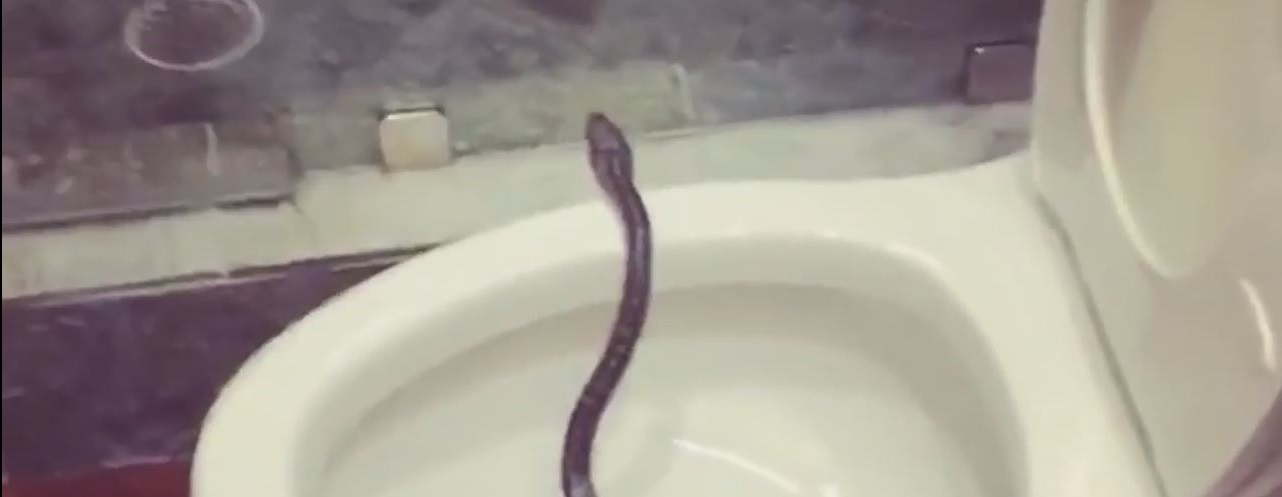“TOILET SNAKES”—ARE THEY REAL??
As humans’ #1 fear, the mention of snakes generates a lot of deep emotions from people. When the conversation gravitates toward the many urban myths surrounding snakes, the question, “Can a snake really crawl up the plumbing and end up in my toilet?” always seems to pop up.
CAN SNAKES CRAWL UP AND INTO MY TOILET??
In short, the answer is a resounding, “YES!” though with caveats. More likely, a pet (or wild) snake has made itself into the toilet from some other egress, such as the space under the bathroom door, originally from either a cage or from a hole in the foundation, in the case of a wild snake. The main problem with finding snakes inside is not that they are dangerous or venomous, but that people are just so frightened of them. Snakes will not inordinately attack someone, unless they are provoked, so if you actually do find yourself staring at a snake in the toilet bowl, try to calmly close the lid and walk away. Then call a professional (or your dad or husband) to remove it.
HOW IT HAPPENS
Believe it or not, when you are sitting upon “the throne,” you are a mere 10-12 inches away from the sewer water, in most cases. And, while it is unlikely for it to happen, it is certainly possible for a small snake to slither up the pipes from a septic tank with a loose cover or enter the pipes via a crack in the sewer line. Even more unlikely is the emergence of a snake from an upstairs, or non-ground floor, toilet, but a ground-floor toilet is more likely to be fair game.
Another possibility for snakes emerging from the toilet is that of an entrance through the stack pipes that vent the building’s sewer gases to the outdoors. There are usually multiple stacks that vent the gases from different areas of the building. Unless there is active running water, these pipes are actually dry, and especially in older, larger sewer systems, it is not improbable for a snake to slide into the main system and then make its way to the S-shaped pipe that leads directly into your commode.
One last possibility for a snake’s entrance into the inner workings of the throne, is through the plumbing pipes themselves. If a building has a crawl space underneath the first floor, and one of the pipes has a leak in it, the snake could get in through that crack. This is the least likely, though, because if one of the pipes has a leak, you are likely to know it quickly—before a snake can get in.

REMEDIES
In the case of the loose septic tank cover, you will want to secure the cover tightly, and the problem should go away. If the sewer line has a crack somewhere along it, it will need to be repaired, most likely by the water company. If it falls within your property lines, you will probably need to hire a plumber to repair it.
If you notice a gap in the vent pipes, you may want to patch it with large-bore screen; it is small enough to keep snakes out, but still large enough to allow the gases to vent. Do not use fine hardware cloth or small-bore screen, as it is too easily blocked (by leaves, snow, dirt), and does not allow the gases to vent to the outdoors. You don’t want this!
A plumber can “videoscope” your water lines to see whether or not a crack lies on your or the water company’s territory. If he does find it on yours, it can be fairly easily patched. If it is on the water company’s side, it will be up to them to find and repair it.
Hope this helpsssssss!
Read the How to get rid of snakes page for helpful information and to learn more about “TOILET SNAKES”—ARE THEY REAL??
“TOILET SNAKES”—ARE THEY REAL??

